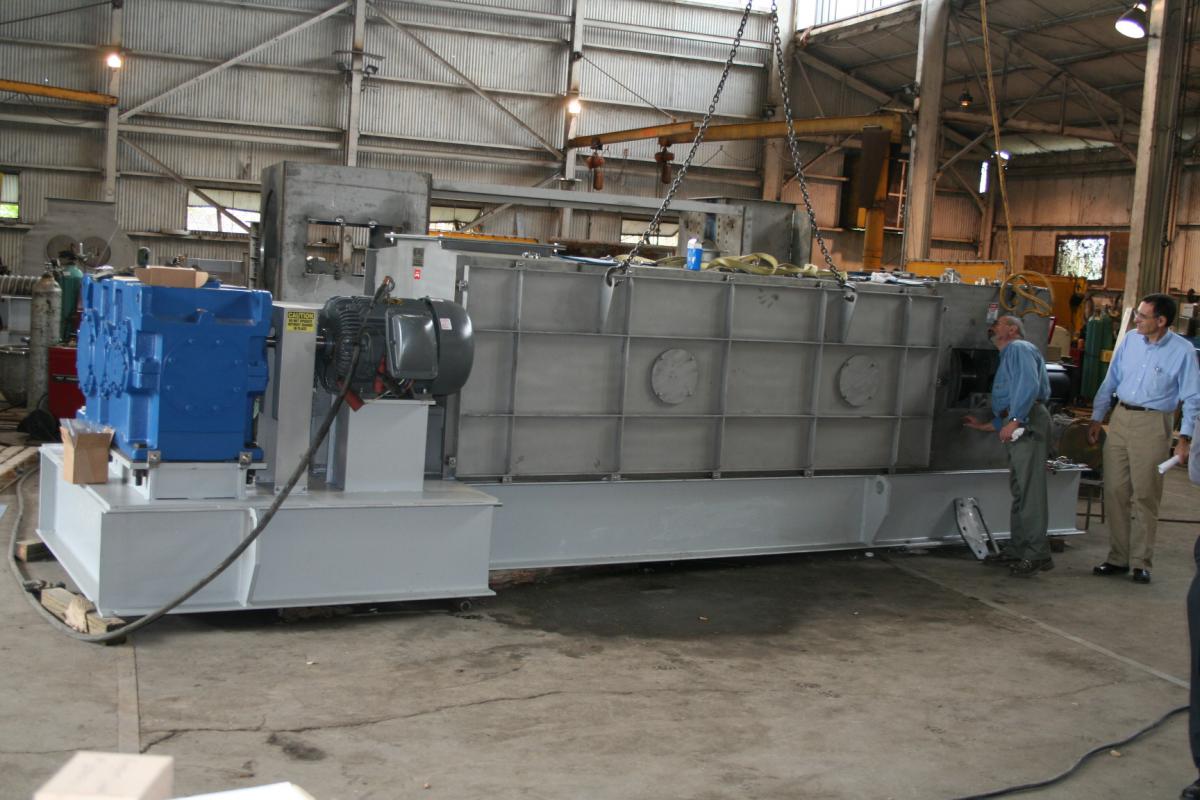The Series VP (“Vincent Press”) screw presses came out in 1952. The latest addition to this series is the Model VP-24. This machine is for applications where the Model VP-22 is borderline in capacity. The VP-22, introduced in 1973, was to have double the capacity of a Model VP-16. Over the years we have found that it generally falls short of this mark. In contrast, the VP-24 is expected to easily double the capacity of a VP-16.
The attached photo shows the first VP-24 that we have produced. This machine was done in vapor tight construction because it will be used to expel aqueous alcohol solution from citrus pectin. The machine is being installed in the Danisco plant in Mexico.
A second VP-24 is expected to ship to China later this month. It, too, has the vapor-tight design as it will be used to separate alcohol solution from apple pectin. The drives of these two machines differ because the applications are different: the Danisco machine is 40 horsepower, while Yantai Andre Pectin requires only 20 hp.
Both presses will be driven by VFD’s. The Baldor explosion-proof motors that were selected are rated for operation from 9 to 90 Hertz.
The discharge cone of the VP-24 is actuated by dual air cylinders. This simplification is now appearing in almost all Series VP presses. It is especially good in vapor-tight applications as it puts the air cylinders and thrust bearing outside of the vapor-tight compartment.
The design of the covers on these presses has been improved as a result of work with CP Kelco in Denmark. There is a 1/2″ O-ring of solid Silicone mounted in a pocket that follows the perimeter of the cover. The cover itself is a thick honey-comb structure that minimizes warpage. This simple design provides reliable sealing while greatly reducing the number of clamps required.
Vapor-tight presses must use direct coupled drives to avoid the fire hazard associated with belt drives. Direct-coupling is used in many other applications where the length of the machine is not an issue. A belt drive allows shortening the machine by approximately the length of the motor.
A much-simplified mechanism is being used to drive the discharge cone when the rotating cone feature is specified. This has greatly reduced the cost of this option.

ISSUE #170
